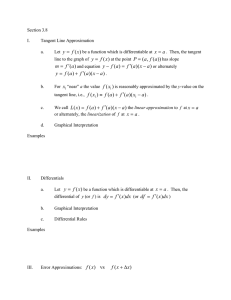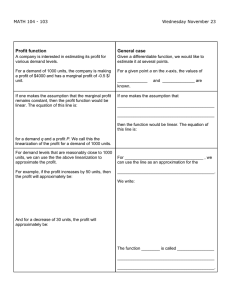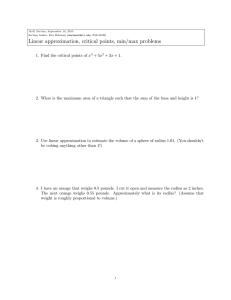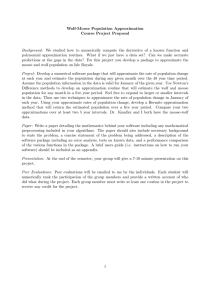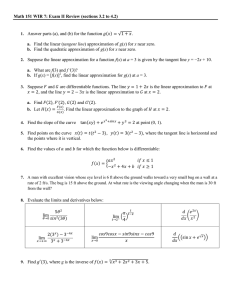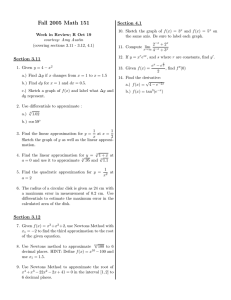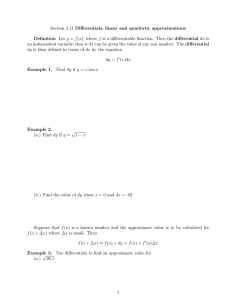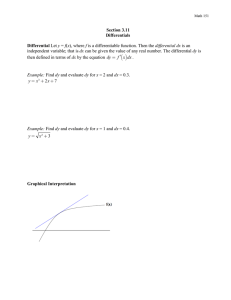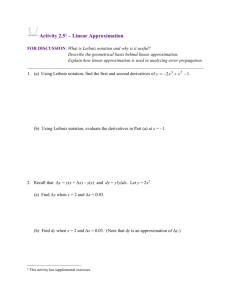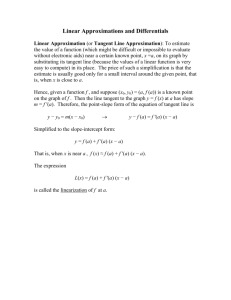L x
advertisement
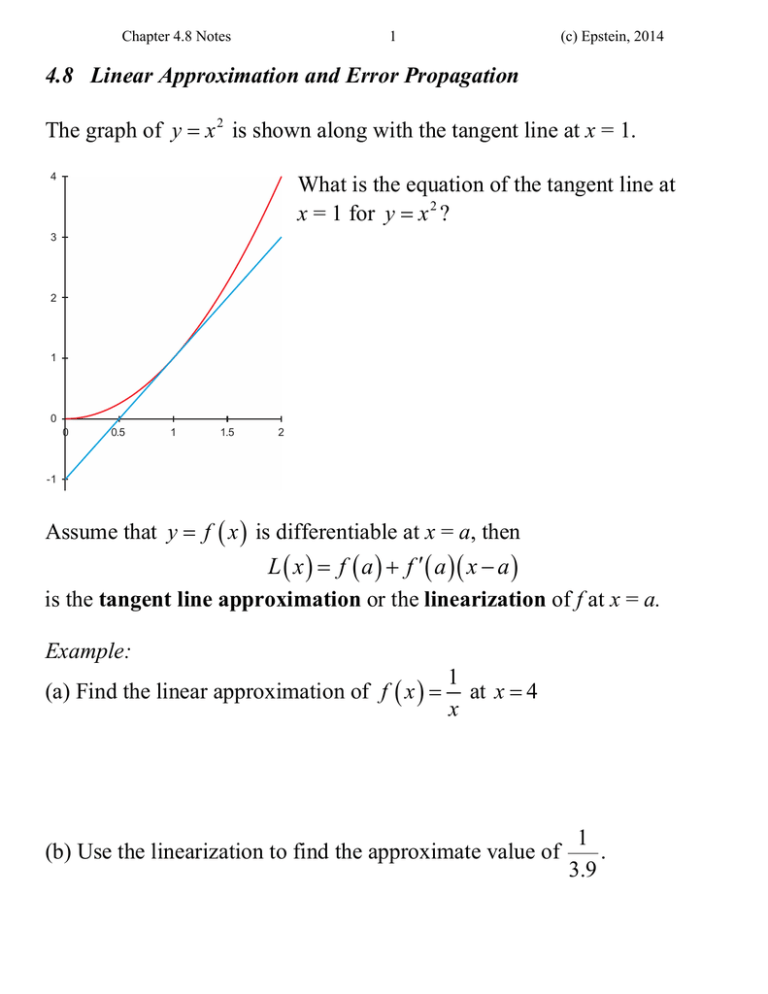
Chapter 4.8 Notes 1 (c) Epstein, 2014 4.8 Linear Approximation and Error Propagation The graph of y x 2 is shown along with the tangent line at x = 1. 4 What is the equation of the tangent line at x = 1 for y x 2 ? 3 2 1 0 0 0.5 1 1.5 2 -1 Assume that y f x is differentiable at x = a, then L x f a f a x a is the tangent line approximation or the linearization of f at x = a. Example: (a) Find the linear approximation of f x 1 at x 4 x (b) Use the linearization to find the approximate value of 1 . 3.9 Chapter 4.8 Notes 2 Example: Find the linear approximation of f x (c) Epstein, 2014 1 at a 2 . 3 2x Example: Find the linear approximation of f x e 2 x at a 0 and use it to approximate e 0.4 . Example: Find the linear approximation of f x sin x at x 0 and use it to approximate sin(0.1). Chapter 4.8 Notes 3 (c) Epstein, 2014 We can use our linear approximation to see how measurement errors are propagated when used in formulas. Suppose that x0 is the true value of an observation and x is the measured value. The absolute error (or tolerance) in the measurement is x x x0 . The relative error is x / x0 and the percentage error is 100 x / x0 Example: The radius of a circular disk is given to be 24 cm with a maximum error in measurement of 0.2 cm. Find the absolute and relative error in the area of the disc. Example: The circumference around the middle of a sphere is measured to be 40 cm, with a possible error of ±1 cm. Estimate the possible error in the volume of the sphere.
